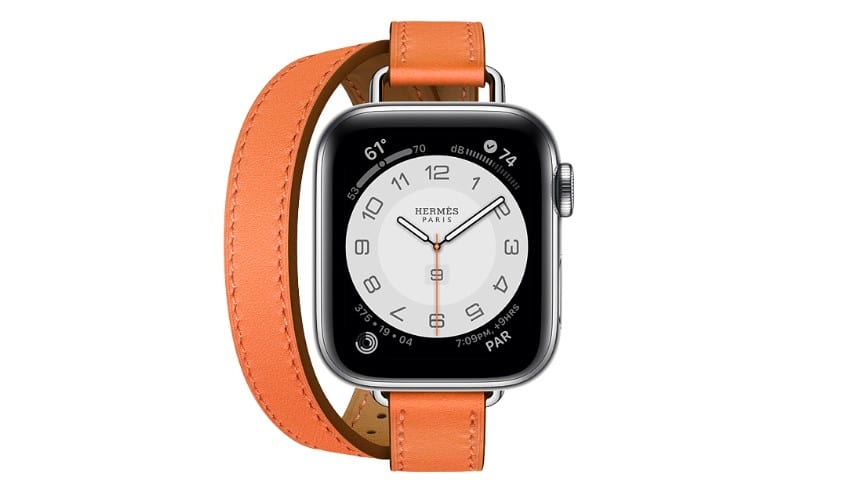From the ad inserts that you find in your morning newspaper to eCommerce giants who work with another brand to create a product, all of these are partnerships. With the right partnership, everything falls into place to provide value for all stakeholders, including the customer.
Forging partnerships with another brand is a textbook marketing move that has paid dividends since the beginning of the trade.
Why else would a 183-year-old fashion luxury brand team up with a technology pioneer who is into consumer electronics?
Yes, I am talking about the partnership between Apple and Hermes. Apple watches have had unprecedented success over the years, so much so that they have half the share of all smartwatch revenue (in 2020). The collaboration was to create Hermes’ version of the watch. Guess what? It was sold at thrice the price of the regular Apple watch. It was a win-win for both brands.
Partnerships like this could be the right solution for a business that is finding it difficult to enter into a new market. To use the same example, Apple might have been able to appeal to highly fashion-conscious customers by launching the Hermes Apple watch.
There are different types of partnerships that eCommerce businesses can do to strengthen their brand and increase sales. Let us look at some of the collaborations between brands:
1. Brand partnerships
The Apple-Hermes watch is an example of a partnership that has given rich dividends to both brands. Would you want to get your hands on a Rolex watch if it were signed personally by Roger Federer? Of course, if you are a tennis or watch aficionado, it is a novelty item you cannot afford to miss. It doesn’t even have to be a novelty; like any other product, it should appeal to the sensibilities and tastes of your target market.

For a partnership to work, you need to find a brand that can have a similar target audience or you should be able to create products that will elicit interest amongst people. Do not make the mistake of tying up with a similar company, though. Both brands should be invested in this relationship and promote the product’s campaign.
Another interesting partnership is that of Walmart and the media company BuzzFeed. The partnership is with BuzzFeed’s Tasty, a viral food video brand. Thanks to this partnership, Tasty’s recipe videos are shoppable, allowing Walmart’s customers to purchase the products directly with the help of the video. If you have been on the Internet and are in love with recipe videos like most of us, it is impossible to have missed Tasty’s videos. On paper, a retail brand and a media company are two improbable partners, but this partnership makes perfect sense.
Does Walmart not have the resources to make its recipe videos? Of course, they do. But Tasty’s videos are already viral, and partnering with them makes more sense than building from scratch.
Even small brands can find opportunities to partner with larger brands.
2. Influencer marketing
Microsoft wanted to encourage more women to work in STEM disciplines. Guess who Microsoft partnered with for this campaign? National Geographic, because they are also influencers in their own right and command a lot of respect from its viewers.
Their campaign called “Make What’s Next” leveraged macro and micro-influencers in the field of adventure photography for this. Each of the photos featured the story of a woman adventurer or scientist.
With this powerful B2B influencer campaign, Microsoft reached more than 91 million people.
Influencer marketing in B2B isn’t about selling alone, but it has the power to inspire too. Most B2B sales cycles are long; by using influencer marketing, you can create trust and visibility amongst your target audience. By working with the right kind of influencers and knowing how to write a brand pitch cold email, you will be able to reach your target audience and provide amazing value to them through people, aka influencers whom they trust.
Holger Sindbaek, the owner of World of Card Games, shares, “For a small business like ours, every marketing dollar counts. Initially, influencer marketing seemed like a gamble. However, the key was to find influencers who genuinely loved our product and had an audience that matched our target demographic. We didn’t need the biggest names; we needed the right voices. By partnering with micro-influencers who were genuinely passionate about our offering, we saw not just engagement but real conversions. For small businesses, it’s not about casting the widest net but the most precise one. Find those influencers who align with your brand’s heart, and you’ll see genuine growth.”
3. Affiliate partnerships
Another win-win for brands is to indulge in affiliate partnerships. The business magazine Fast Company can be an affiliate for a Shopify owners’ business conference. Why? Because the readers of the former are more likely to be potential attendees than, let’s say, someone who reads Vogue.
When you are in an affiliate partnership, you don’t have to pay anything upfront to the affiliate unless they make a sale. The percentage of commission that the business is liable to pay is based on pre-discussed terms.
The only downside to doing affiliate marketing is that you won’t have any control over the way that your affiliate partner is marketing your offering. During the campaign period, the relationship will be intimate and there should be a smooth flow of conversations. Otherwise, the campaign will not fetch you the desired results. You also need to make your affiliate partners feel invested in the program. You should create a community for your affiliates where you help them with their questions and guide them into selling more of your products/services using optimized content.
Affiliate networks such as Commission Junction (CJ), Clickbank, and MaxBounty are some of the most popular. Amazon has a program for affiliates, and it is easily one of the biggest websites that give payouts in millions, although there have been recent reports of them slashing payouts.
Here is a snapshot of the affiliate commission Amazon pays.

4. Co-branding
It is a marketing strategy in which multiple brands contribute to creating a melded brand that has its own brand identity. What’s the point, you ask? With co-branding, you combine the marketing muscle, brand identity, goodwill, and other aspects that persuade the customers to pay a premium.
Co-branding could result from a merger or an acquisition or even involve piggybacking on each other’s strengths. Nike and Apple’s partnership has resulted in activity tracking technology in athletic gear with iPhone apps and the Apple Watch.
When two established brands create something together, the resulting product or service will get the same respect from its target market. The new product is credible, even if it is in a different niche for both businesses.
There are different types of co-branding:
- Joint venture co-branding
- Multiple sponsor co-branding
- Ingredient co-branding
- National to local co-branding, and so on
What should businesses keep in mind when collaborating with other brands?
The best part about living in a digital age is that we can reach out to anyone living in any part of the world. Having the right kind of strategic partnerships and media relations will help an eCommerce brand with a plethora of marketing and PR opportunities, give them the ability to scale at will, improve retention rates as well as see a spurt in referrals, find newer markets and a newer set of customers.
When you are about to find a strategic eCommerce partner, it should be a win-win for both parties involved. If the equation is skewed in terms of the benefits that each of the partners gets, then the relationship won’t last long.
Here are some of the questions that you need to ponder over before choosing a strategic eCommerce partner:
- How will the partnership help both of us?
- How can we make the partnership exciting for our end customers?
- Do they have a sizable list of customers or reach?
- Do we both have the wherewithal and capacity to get a partnership of this size up and running?
- What are the objectives of the partnership and how do we expect the results to affect each other’s bottom line?
- What will be the KPIs that we will use to measure the success of the partnership?
Once you have clarity on these questions, the rest of the process is easy. All you need to do is to work on the specifics, drive team productivity, and go ahead with it.
If your prospective partner isn’t sold on the idea yet, create an MVP (Minimum Viable Product) with them. Show the end product to a certain section of your audience. See how they respond to it and if it works well for the audience, convincing the prospective partner becomes easier.
Conclusion
Partnerships are great for every stakeholder associated with them. That’s why even big brands go out of their way to find marketable partnerships. If partnerships between brands are done right, it is easy to bring in a new income stream, grab eyeballs, and reach out to a newer market segment.
Businesses like Facebook, Google, Apple, Shopify, etc., strive to create an ecosystem of partners and developers on top of their main offerings. While Shopify generated $1.1 billion in revenues in 2018, its partners generated more than $2 billion in revenues. Do you see how the partnerships prop each other—Shopify and its partners?
You don’t have to be a billion-dollar giant to form partnerships with other brands, find ones that relate to your brand, and create an offering that customers love.








